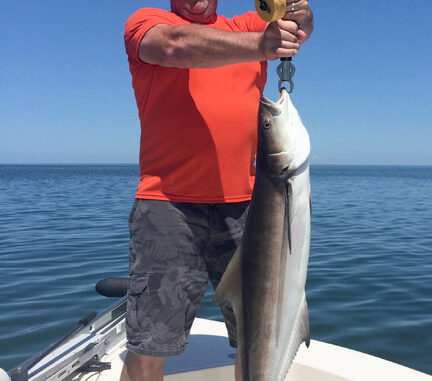

A good week of warm weather and only a mild front that followed has pushed water temperatures up toward what we like to see for spring cobia fishing.
The spring run of these powerful fish is beginning and as far as fun and challenge, they’re hard to beat. Here’s how we fish them.
In clear, calm water, cobia can be spotted, often in small pods of fish. From the tower of my boat, just running the flats, they can be found. Sometimes they will be following a group of rays, as they like to scoop up baitfish, crabs and shrimp the flapping wings of the rays stir up on the bottom.
Once we’ve located fish, it’s a matter of positioning the boat within casting distance ahead of the direction they are moving. Live sardines will usually do the trick, but pinfish are another good option. They also take artificial baits, including the classic black plastic eels in large sizes.
In open water, relatively light tackle can be used, but for the big cobia, some reasonably stout medium spinning gear is needed to somewhat slow down these powerful fish, which often make long runs after hooked.
It takes a cobia 33 inches from nose to fork of the tail to meet the minimum length by law, and believe me, a fish that size pulls like a small locomotive when hooked. During the fight, it’s not unusual to see another cobia or two following the hooked fish around, which is the perfect opportunity for a double, or potentially triple hook-up. Talk about a fire drill!
A word of caution for cobia anglers is to be careful when boating these fish. Bringing one in the boat when it’s still green is always a bad move. Large cobia with too much fight left in them have been known to trash boats, tackle and anything else in its way as they thrash around on deck.
Cobia can be treated as a sport fish and released outside the boat, but inviting one home for diner is always an option, as they are great eating. A popular cooking method is to cut them into steaks and throw them on the grill. A keeper-sized cobia will feed several people.
